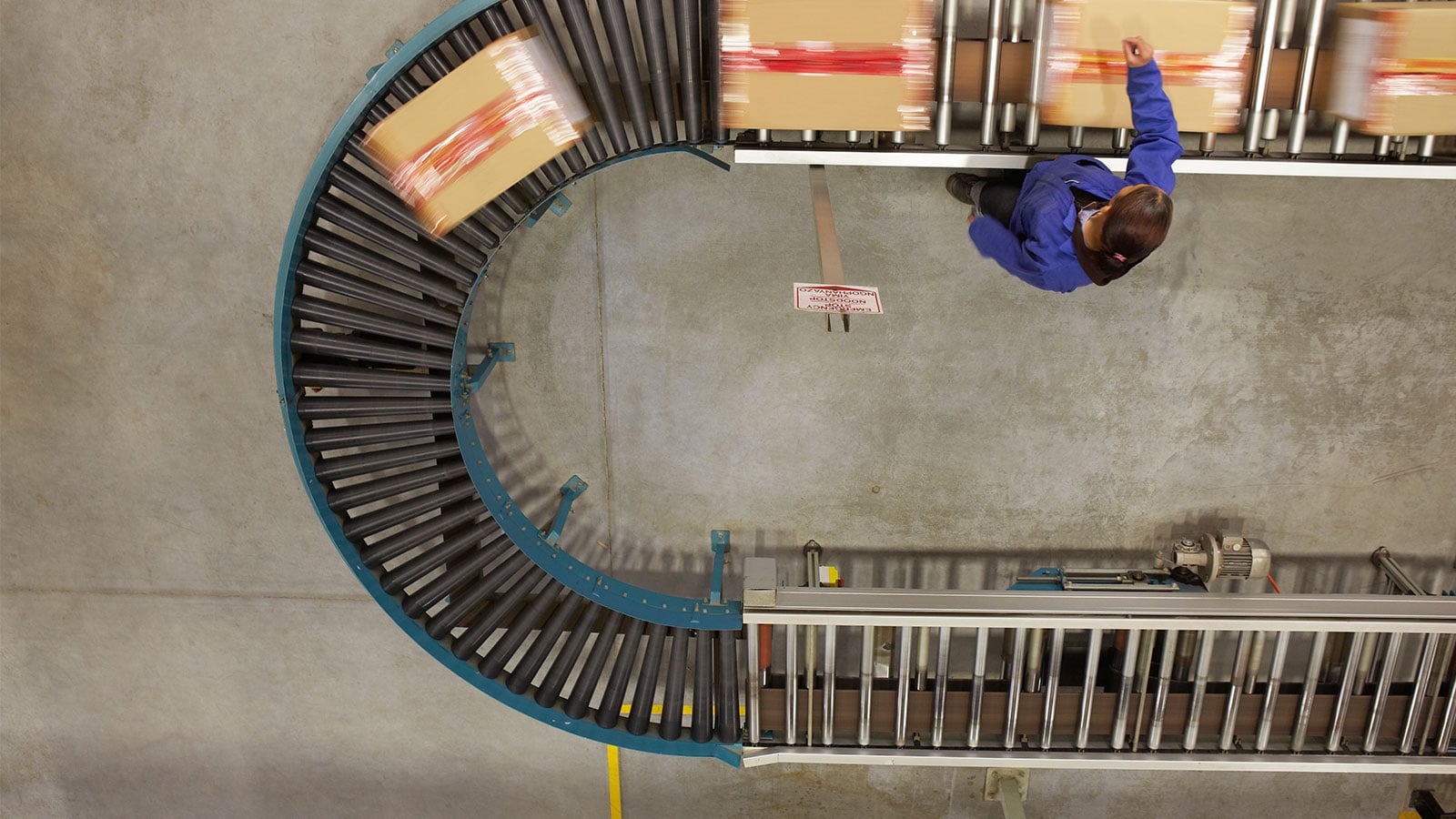Highlights from PwC study on the circular economy
It can boost Asia Pacific’s GDP by US$340bn (a 1.1% net growth) and reduce net emissions by 7.2%.
Triple bottom-line impact — transitioning to a circular economy (CE) model in the Asia Pacific region benefits the economy, jobs and the environment.
Sectoral impact — 33% of the Asia Pacific economy could experience significant impact from a CE transition, both positive and negative.
Top growth sectors under the CE scenario are maintenance, repair and operations (MRO), recycling, and construction.
Sectors disrupted by CE transition are mining and quarrying, petroleum, chemical and non-metallic minerals and metals, and equipment manufacturing.
So, how can companies transition to a circular economy and unlock its value?
Download the full publication
Embracing a circular economy for a resilient tomorrow: Reinventing Asia Pacific
Circular economy: A necessary transformation to tackle Asia Pacific’s triple planetary crisis
The Asia Pacific region, a global manufacturing hub and the world's fastest-growing economic area, accounts for nearly half of global manufacturing output and carbon emissions. However, it faces severe threats from climate change, pollution and biodiversity loss, jeopardising its long-term sustainability and prosperity.
Figure 1: The triple planetary crisis
| Climate change | Pollution/waste | Biodiversity loss |
|---|---|---|
|
|
|
There is an urgent need for businesses and governments to radically rethink strategies to build resilience, stay competitive and stimulate growth in an increasingly challenging environment. According to PwC’s 27th Annual Global CEO Survey – Asia Pacific, 63% of Asia Pacific CEOs are not confident about their company’s long-term viability.
This report studies how a CE could impact the economy, industries and emissions in Asia Pacific. It also offers a guide to businesses on five circular business models along with actionable steps that can be taken to enhance resilience and drive value sustainably through promoting circularity.
Impact of a circular economy on the economy, emissions and jobs
Our CE scenario model assesses the potential impact of a circular transition on the region, revealing significant benefits across the economy, jobs and the environment. Comparing the baseline with a scenario where a circular economy is fully implemented today* shows the following results:
- Net GDP increase of US$339.6 billion (1.1%)
- Net employment increase of 15 million new jobs (1.0%)
- Net emissions reduction of 7.2% if implemented today
Projected out to 2050, United Nations Environment Programme (UNEP) finds circularity can reduce net emissions by 19% compared to baseline levels
* The results presented are a snapshot of the potential impacts if CE were applied today, reflecting the outcomes over a one-year period. The modelling uses 2022 economic data for each of the 14 Asia Pacific territories selected and applies changes to material inputs, resulting in a CE scenario model. We have not specified a timeline for the realisation of this scenario, as the transition to a CE is occurring at varying rates across different sectors, making precise date predictions challenging.
Figure 2: Asia Pacific CE study summary results - baseline vs CE scenario
| Baseline |
CE scenario |
Net change |
Net percentage change |
|
|---|---|---|---|---|
| GDP (US$bn) | 29,568 | 29,907 | 340 | 1.1% |
| FTE (million) | 1,449 | 1,464 | 15 | 1.0% |
| Emissions (Mt CO2e) | 23,602 | 21,898 | -1,704 | -7.2% |
Source: PwC analysis
Circular economy sector interdependencies
The benefits of a CE are not evenly distributed across sectors and come with opportunities and risks. A CE transition could significantly impact more than one-third of the Asia Pacific economy, indicating a substantial shift in economic activities from mining, quarrying, and manufacturing to sectors such as maintenance, repair and operations (MRO), and recycling, with spillover effects into construction. The impact on other sectors, such as services and agriculture, is generally less noticeable.
Figure 3: Impact of a CE on Asia Pacific GDP, employment and CO2e
The highest economic potential in our CE scenario is found in the MRO, recycling and construction sectors.
MRO sector: GDP could expand by 13 times the baseline, with growth in reuse, repair, refurbishing and repurposing outpacing recycling.
Recycling sector: GDP increases 5 times, driven by a shift from virgin to recycled materials in manufacturing.
Construction sector: GDP could grow by 21%, supported by infrastructure expansion for MRO and recycling.
While growth in the MRO and recycling sectors leads to increases in emissions, the carbon intensity of these sectors remains 50-70% lower than in manufacturing, with minimal emissions rise in the construction sector due to waste reduction and material reuse. Note that the CE modeling does not include the RE transition, and therefore these emissions rises may be further mitigated by increased deployment of renewables.
The sectors disrupted by CE transition responsible for nearly 40% of baseline carbon emissions in Asia Pacific, show significant emission reductions:
Mining and quarrying: 26% reduction (172 Mt CO2e)
Petrochemicals and non-metallic minerals (PC&NM): 23% reduction (577 Mt CO2e)
Metals and equipment manufacturing: 21% reduction (1,085 Mt CO2e)
These sectors are also expected to see substantial GDP and employment declines in linear manufacturing and extractive activities:
Mining and quarrying: 25% GDP and 52% job drop
PC&NM: 22% GDP and 44% job drop
Metals and equipment manufacturing: 11% GDP and 33% job drop
To mitigate these impacts, these sectors can consider integrating MRO and recycling activities into their core business models, supporting decarbonisation and offering new expansion opportunities. This is already being observed in the real economy, and therefore it is expected that some of the growth in MRO and recycling shown in our modelling will occur in incumbent manufacturing/extractive sectors.
Circular economy impact on Asia Pacific territories
Our CE scenario model findings reveal that Asia Pacific territories’ GDP that will be highly, moderately, or minimally impacted by the CE transition, based on the economic make-up of each territory.
Figure 4: Economic impact of a circular economy across territories in Asia Pacific
Five circular business models
Adopting a circular economy requires a rethink of value capture, creation and delivery. The five circular business models offer opportunities for businesses to change revenue models, enhance competitiveness and drive innovation while contributing to greater sustainability. Adoption depends on sector relevance, impact and feasibility.
Transitioning to the five circular business models
| Circular supplies | Resource recovery | Product Life Extension | Sharing | Product-as-a-service |
|---|---|---|---|---|
| Companies use renewable, recycled or biodegradable materials as inputs to reduce reliance on finite resources and minimise waste. | Companies identify waste streams and find ways to recover and reuse materials, turning waste into valuable inputs for the same or other processes. | Companies design products that are durable, repairable, and upgradable, extending their useful life and reducing the need for new production. | The sharing economy emphasises access over ownership, where multiple users share access to a product or service. This reduces the need for each individual to own the product, thereby decreasing overall production and resource use. | Companies retain ownership of the product and offer it as a service. Customers pay for the usage rather than ownership (e.g., leasing or subscription models). This promotes the return of products to the company for repair, refurbishment or recycling, extending their lifecycle and reducing waste. |
Source: PwC analysis
Circular economy challenges and enablers
Challenges of a circular transition
1. Changing mindset and perceptions
Transitioning to a CE requires a mindset shift at all levels, from top leadership to consumers and suppliers. It demands a broader perspective that extends beyond waste management, and, for companies and governments, an understanding of regulations, taxation implications, standards and circular metrics.
2. Scaling-up
Although circular economy regulations are one of the fastest developing sustainability regulations in the world, the global circularity rate has actually declined from 9.1% in 2018 to 7.2% in 20237. This decrease highlights the ongoing challenges in raising awareness, scaling and generating demand, and building the capacity to implement circular models.
3. Economic and labour displacement vs just transition
The CE transition is a major economic shift, with significant impacts on industries and the labour market. If not managed well, this shift could displace sectors, small and medium enterprises and the workforce. Asia Pacific in particular also must engage the large informal sector to enable a just transition.
4. Costs of circular materials
Factors such as supply and demand dynamics, market volatility, and low economies of scale can drive up the cost of recycled materials. Although initial CE production costs may be higher, they can present substantial cost-saving opportunities in the medium to long term.
Enablers of the circular transition
1. Building awareness and communication
Raising awareness and educating key stakeholders—including leadership, customers, suppliers, policymakers and investors—on the impact and value of a circular economy is essential. Securing their buy-in, along with continuous engagement and feedback, is vital for refining processes and aligning CE products and services with future market needs.
2. Standards, incentives and sustainable financing
Transitioning to a mature CE requires a thorough ecosystem shift, necessitating common standards, policy support and sustainable financing to drive adoption of new CE business models. Organisations, along with policymakers and financial institutions, play a crucial role in setting these frameworks and providing the necessary support for a successful transition.
3. Designing and using technology and data
Products designed with CE principles require circular thinking to maximize resource lifecycles. Technology, especially AI, can enhance circularity by driving innovation in materials, automating design, maintenance, and recycling processes, and improving market efficiency through better supply-demand matching.
4. Collaboration, ecosystem thinking and integration
A successful transition to a mature CE requires a collaborative approach that embraces ecosystem thinking and integration. Understanding the complex interdependencies within and across organisations is essential to identify challenges and opportunities. Collaboration is needed across departments, with start-ups and technology firms, and through partnerships with suppliers, policymakers and financial institutions. This integrated approach aligns efforts throughout the value chain, enabling effective risk mitigation, value capture and value creation. By coordinating resources and fostering innovation, stakeholders can drive both individual and shared success, creating lasting value for the entire ecosystem.
5. Developing capabilities and supporting a just transition
The circular economy transition will unevenly impact sectors and jobs, particularly in extractive and manufacturing sectors. To minimise disruptions, it's crucial to equip workers (including informal workers) and micro-small and medium enterprises with necessary skills and resources. Collaboration between governments, industry and communities is essential to support these vulnerable groups.
Approach to initiate and accelerate the transition to a circular economy
Businesses today face a complex sustainability landscape with ever-evolving compliance requirements, all while needing to maintain their commercial viability. Introducing circularity into this mix can seem overwhelming, especially given its ambitious nature.
However, a step-by-step approach can guide businesses from merely meeting compliance to achieving efficiency and ultimately creating value. This approach is adaptable for businesses at different stages of their journey, whether they are just starting, have some initiatives in place, or are mature but seeking new ways to innovate and respond to changing environmental demands.
Approach to CE transition for businesses
Early in their CE journey:
Understand compliance obligations
Assess current state and benchmark
Examine cost-benefit analysis
Integrate with sustainability strategy
Develop an implementation plan
Further in their CE journey:
Understand compliance obligations
Identify competitive differentiation opportunities
Advanced changes to products
Activate investments and partnerships
Embed circular actions into strategies
Conclusion
Adopting a circular economy is essential, not optional, due to the urgent triple planetary crisis—climate change, pollution and biodiversity loss. This shift is increasingly driven by regulatory measures and resource resilience concerns. Now is the time for Asia Pacific to act decisively and reinvent itself to create resilient, vibrant and sustainable economies for the future.

















